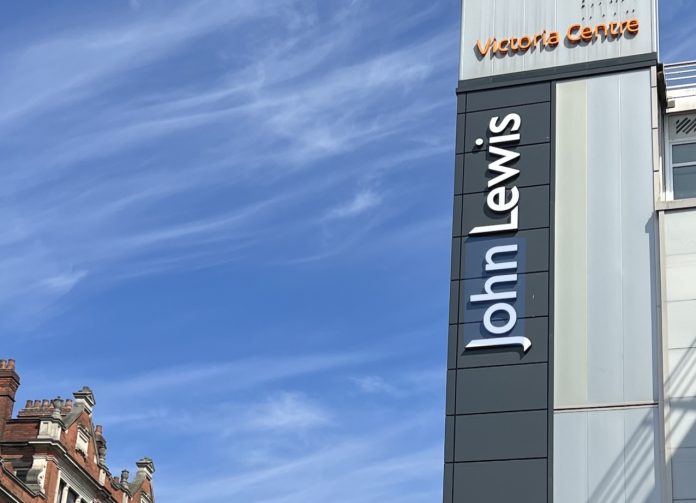Waitrose sales were down 5% while John Lewis sales were up 3%.
The business said in a letter to partners:
Performance
This half year we made a loss before tax and exceptional items of £92m, compared to a profit of £69m in the same period last year and a loss of £52m three years prior (i.e. the last pre-Covid half).
This is before exceptional items, principally reducing the size of our London office space.
Including exceptional items, we made a loss before tax of £99m (loss before tax of £29m in 2021/22 and a profit before tax of £192m in 2019/20, which included the benefit of closing the defined benefit pension scheme).
It is not unusual for us to make a loss in the first half of the year – we have done so in three of the last four half years. Our trading is heavily skewed to Christmas with most of our profits coming in the last quarter of the year.
The loss was largely due to two main factors:
Inflation has affected consumer spending. We have more customers year-on-year in both brands (up 6% in Waitrose and 4% in John Lewis) but they are spending less. Inflation has increased our costs, which means we have to do more to meet our original efficiency targets because we have not passed on all of the increased costs to our customers;
Post-pandemic customer trends. We have seen in-store spending rebound compared to last year. Online remains elevated compared to pre-pandemic levels; we believe this shift is permanent.
We have seen customers move their discretionary spending from high margin, big ticket household items to restaurants and holidays – from dining room furniture to dining out.
Waitrose
Waitrose sales were £3.6bn, down 5% like-for-like on a year ago (down 5% in total); up 7% on a like-for-like basis on three years ago (up 4% in total). During the pandemic, Waitrose benefited from bigger baskets as customers were restricted by the pandemic, dining out less and doing fewer shops.
Customer numbers have held up, transactions were up 14% year-on-year, but basket sizes are smaller by nearly a fifth. Online shopping continues to be important, accounting for 15% of sales; significantly up on before the pandemic and 5% below the pandemic peak of around 20%. Nearly seven in ten baskets include a product from the Essential range. Total customer numbers are 13.4 million, up 6% year-on-year.
Waitrose Trading operating profit fell by £93m to £432m due to a combination of volume decline and inflationary pressures being partially offset by a more favourable profit mix and cost savings.
John Lewis
John Lewis sales were £2.1bn, up 3% like-for-like on last year (up 3% in total). Against three years ago, John Lewis sales were up 13% like-for-like (up 4% in total). This has been driven by a return to shops. The share of sales in shops has averaged 41% for the half year, compared to 26% last half year, during the pandemic, and 60% before Covid. City Centre stores have come back most strongly with the return to more office working.
Fashion has been the best performing category, growing 25% compared to last year with strong performance in holiday wear, as people returned to travel and summer breaks. Conversely, our home and technology categories, which performed strongly during the pandemic, declined year-on-year.
The impact of the cost of living – and specifically growing concerns about inflation and energy costs – is evident in patterns of spending. ANYDAY – our great value own-brand – saw sales rise 28% on last half year. Energy saving items also attracted high demand – air fryers up 56%; smart thermostats up 8%. Customer numbers have been strong, with half a million more people shopping with John Lewis than a year ago. Total customer numbers are 12.2 million, up 4% year-on-year.
John Lewis Trading operating profit has been maintained at £295m compared to last year.
The business said in its report:
Our business resilience and employee-owned model means we can prioritise support for our Partners, customers, communities and suppliers during unprecedented cost of living crisis.
First half loss of £99m, or £92m before exceptional costs, largely due to the combination of cost inflation not fully passed on to customers, impact of cost of living crisis, unwinding of Covid shopping patterns and investments to support Partners, customers and suppliers.
Announcing a one-off cost of living support payment – £500 for full-time Partners, less for part-time; increasing lowest rates of pay for Partners; free food over the winter and doubling our financial assistance fund to help with bills; committed £16m to Britain’s pig farmers; £2m support and 2.8 million meals to vulnerable communities.
Doubling down on Partnership Plan with investments in John Lewis and Waitrose with customer numbers up and a strong focus on value. Sales2 up in John Lewis by 3% like-for-like to £2.1bn; down in Waitrose by 5% like-for-like to £3.6bn.
Cost savings of £90m in the half; expanding ‘Lean Simple Fast’ efficiency programme (part of the Partnership Plan) to improve margins and productivity given inflationary headwinds.
Progress on diversification – new and relaunched financial products and plans to build rental homes taking shape.
Strong balance sheet with £1.5bn of cash and credit facilities to help weather further shocks.
Outlook for the rest of the year is highly uncertain owing to the cost of living crisis and its impact on discretionary spending as well as criticality of our Christmas trading period.








